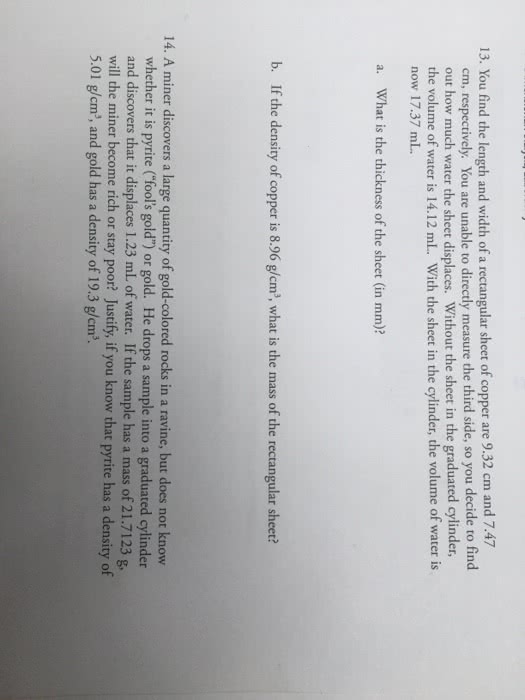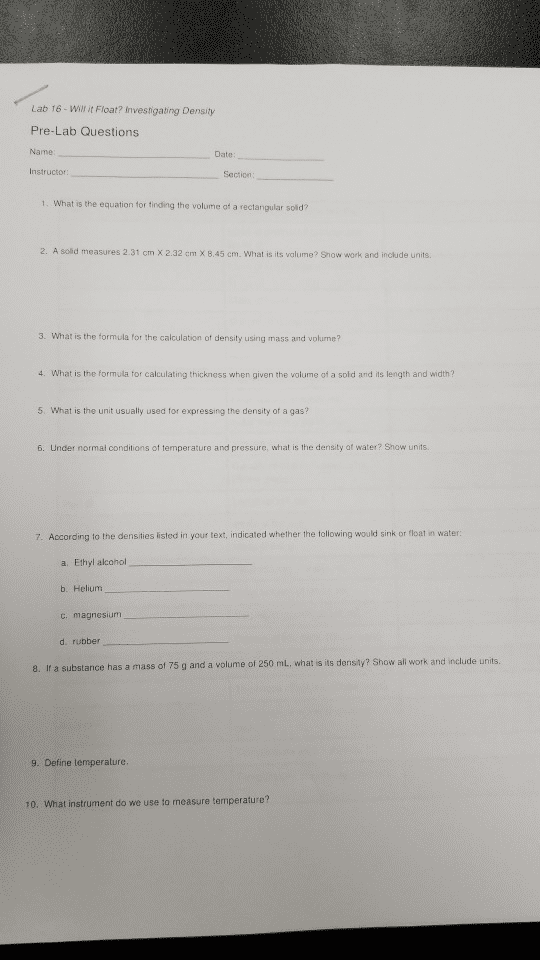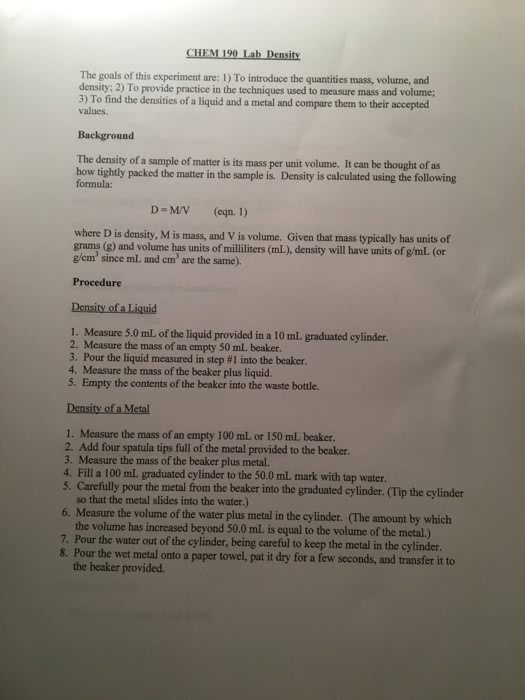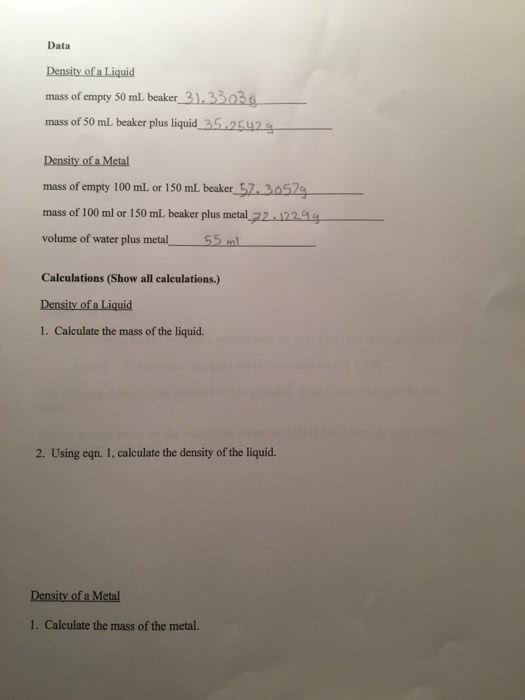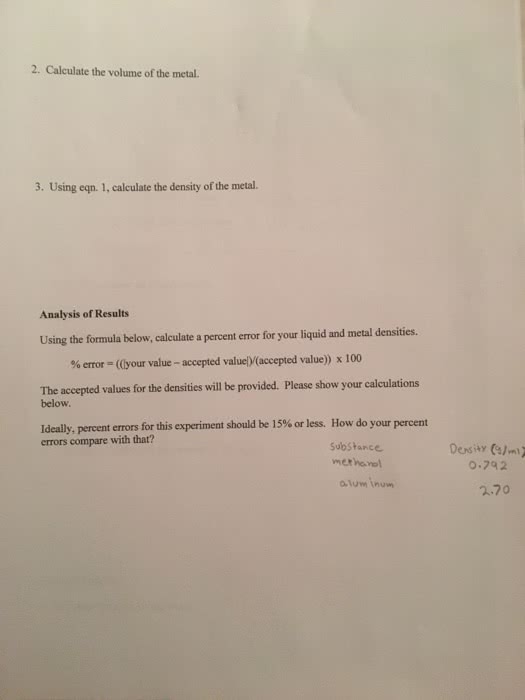CHE 1301 Lecture Notes - Lecture 3: Decimal Mark, Trailing Zero, Significant Figures
Document Summary
Obtained or derived from a basic unit: area and volume -- basic unit is length. Density - mass per unit volume: a certain mineral has a mass of 17. 8 g and a volume of 2. 35 cm^3. What is the density of the mineral? d=m/v. 1 ml = 1cm^3 = 1cc: decide if a ring with a mass of 3. 15 g that displaces 0. 233 cm^3 of water is platinum (d=21. 45g/cm^3) d=m/v. =13. 42g/cm^3: copper has a density of 8. 96 g/cm^3. If 75. 0g of copper is added to 50. 0ml of water in a graduated cylinder, to what volume reading will the water level in the cylinder rise? v=m/d. Delta ml = 75. 0g * (cm^ . 96g)(ml/cm^3) = 8. 37ml. They only serve to locate the decimal point: trailing zeros at the end of a number, but before an implied decimal point, are ambiguous and should be avoided. 10 dm=1m infinite number of sig figs exact numbers. 10,000m ambiguous, generally assume 1 sig fig.


